Car buying
Buying a car? Check out the latest Parkers expert advice to help with your car purchase.
Whether you can’t decide which car to buy, or where to buy it, we can guide you through the new car buying process.
We have lists of the best cars to buy today, advice on how to avoid car sales scams, and the latest news to keep you up-to-date with car industry changes.
If you’re buying a car, you’ve come to the right place.
Latest articles
-
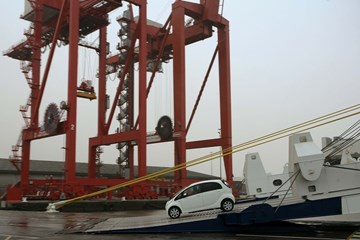 Importing a Japanese car to the UK: costs, process & key tipsLooking to import a car from Japan? Sometimes, the UK market simply doesn’t offer the specific model or spec you’re after. Whether it’s a high-performance JDM model, the best sports...
Importing a Japanese car to the UK: costs, process & key tipsLooking to import a car from Japan? Sometimes, the UK market simply doesn’t offer the specific model or spec you’re after. Whether it’s a high-performance JDM model, the best sports... -
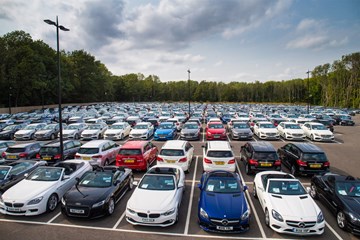 How to get the best price when buying a used car: tips that could save you thousandsIn the market to buy a used car? There are a few things you can do to ensure you’re getting the best price on your next purchase, regardless of where...
How to get the best price when buying a used car: tips that could save you thousandsIn the market to buy a used car? There are a few things you can do to ensure you’re getting the best price on your next purchase, regardless of where... -
-
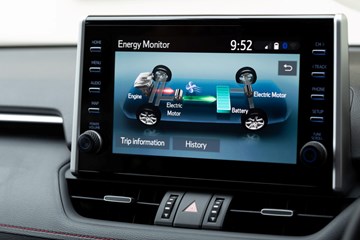 Hybrid vs electric vs petrol vs diesel: which is best for you?Your method of propulsion is among the most important decisions to make when choosing your next car. Low emission zones, the 2030 petrol and diesel ban and of course, the...
Hybrid vs electric vs petrol vs diesel: which is best for you?Your method of propulsion is among the most important decisions to make when choosing your next car. Low emission zones, the 2030 petrol and diesel ban and of course, the... -
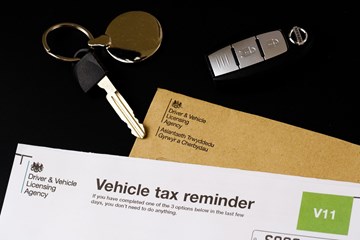 How to reduce your road taxAt a time when car running costs seem to be escalating ever higher, you may be looking around for ways of cutting down your outgoings. One way of doing that...
How to reduce your road taxAt a time when car running costs seem to be escalating ever higher, you may be looking around for ways of cutting down your outgoings. One way of doing that... -
 What is car depreciation and how to avoid itIt’s a fact of buying a new car that it loses value over time – a process known as depreciation. You lose 20% of its list price in VAT alone...
What is car depreciation and how to avoid itIt’s a fact of buying a new car that it loses value over time – a process known as depreciation. You lose 20% of its list price in VAT alone... -
-
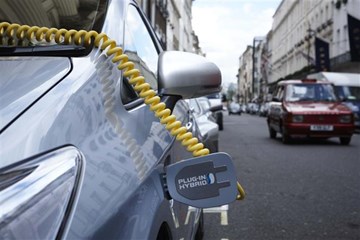 Diesel v hybrid: Which is best for me?The technology used in hybrid cars has been around since 2000 in the UK, however you wouldn’t be alone if you’d never driven one. Although small sale volumes initially caused...
Diesel v hybrid: Which is best for me?The technology used in hybrid cars has been around since 2000 in the UK, however you wouldn’t be alone if you’d never driven one. Although small sale volumes initially caused... -
 Selling a car on eBayeBay has one of the largest audiences on the web, making it one of the best places to market your used car for sale. It’s also a user-friendly...
Selling a car on eBayeBay has one of the largest audiences on the web, making it one of the best places to market your used car for sale. It’s also a user-friendly... -
-
 14 great cars for transporting twins and a toddlerBuying a new car is often top of the list of things to do before a new baby arrives. If you already have a toddler and you’re expecting twins, the subject...
14 great cars for transporting twins and a toddlerBuying a new car is often top of the list of things to do before a new baby arrives. If you already have a toddler and you’re expecting twins, the subject... -
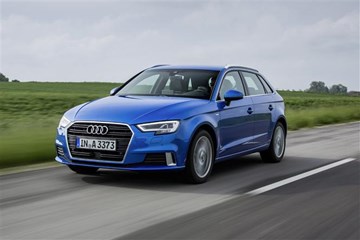 Which Audi A3 should you buy?The Audi A3 is a desirable alternative to the BMW 1 Series, Mercedes-Benz A-Class and Volvo V40. It’s got a great image and an even better interior to woo buyers...
Which Audi A3 should you buy?The Audi A3 is a desirable alternative to the BMW 1 Series, Mercedes-Benz A-Class and Volvo V40. It’s got a great image and an even better interior to woo buyers... -
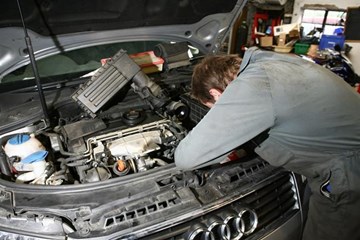 6 things that can void your car warrantyBuying a new car is exciting and knowing that it’s covered by a manufacturer warranty if something should go wrong offers great peace of mind. But there are exclusions and...
6 things that can void your car warrantyBuying a new car is exciting and knowing that it’s covered by a manufacturer warranty if something should go wrong offers great peace of mind. But there are exclusions and... -
-
 When’s the best time to buy a car?No matter the size, model or price, buying a new car takes some significant decision making. To ensure you come away with the best deal on the car you want,...
When’s the best time to buy a car?No matter the size, model or price, buying a new car takes some significant decision making. To ensure you come away with the best deal on the car you want,... -
.jpg) Automatic vs manual - which should you buy?Should you get an automatic or manual gearbox on your next car? It’s a simple question of whether you want to let the car change gear or you take control...
Automatic vs manual - which should you buy?Should you get an automatic or manual gearbox on your next car? It’s a simple question of whether you want to let the car change gear or you take control... -
-
 Skoda Live Tour brings the showroom to youSkoda is aiming to give power back to car buyers with a new concept called Skoda Live Tour. Allowing buyers to receive a guided tour around their desired new car at...
Skoda Live Tour brings the showroom to youSkoda is aiming to give power back to car buyers with a new concept called Skoda Live Tour. Allowing buyers to receive a guided tour around their desired new car at... -
 Diesel health risks: the detailsHarmful emissions coming from diesel cars and the associated health problems are becoming a more prevalent issue not only in the UK, but worldwide. Is it because of the VW emissions...
Diesel health risks: the detailsHarmful emissions coming from diesel cars and the associated health problems are becoming a more prevalent issue not only in the UK, but worldwide. Is it because of the VW emissions... -
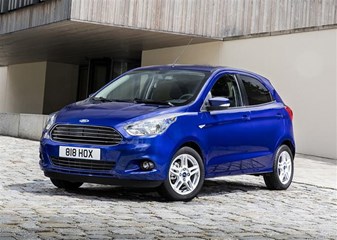 Cheapest new cars to insureThe third quarter of 2016 has seen the average price for comprehensive insurance cover rise to £737, with many motorists – especially younger drivers – feeling they’re being priced off...
Cheapest new cars to insureThe third quarter of 2016 has seen the average price for comprehensive insurance cover rise to £737, with many motorists – especially younger drivers – feeling they’re being priced off... -
-
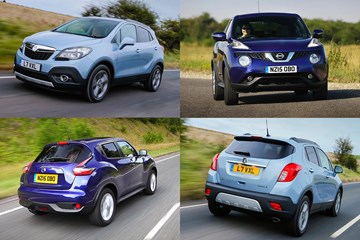 Twin test: used compact SUVsOne of the key battlegrounds for car manufacturers in recent years is the SUV market sector, with demand affordable compact crossovers leading the charge. We’ve pitted two of the nation’s biggest...
Twin test: used compact SUVsOne of the key battlegrounds for car manufacturers in recent years is the SUV market sector, with demand affordable compact crossovers leading the charge. We’ve pitted two of the nation’s biggest... -
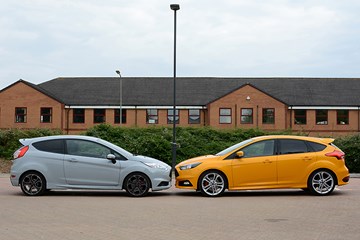 Twin test: Ford Fiesta ST200 vs Ford Focus STFor those wanting a sporting supermini, the Ford Fiesta ST has been a popular choice since it was launched in 2013. With a more entertaining drive and a lower list...
Twin test: Ford Fiesta ST200 vs Ford Focus STFor those wanting a sporting supermini, the Ford Fiesta ST has been a popular choice since it was launched in 2013. With a more entertaining drive and a lower list... -
-
 Suzuki S-Cross vs Vauxhall Mokka X vs Kia SportageCrossovers are very popular with family buyers – the rugged SUV looks, more space and a greater sense of safety chief among the appeal. But what if you actually need...
Suzuki S-Cross vs Vauxhall Mokka X vs Kia SportageCrossovers are very popular with family buyers – the rugged SUV looks, more space and a greater sense of safety chief among the appeal. But what if you actually need... -
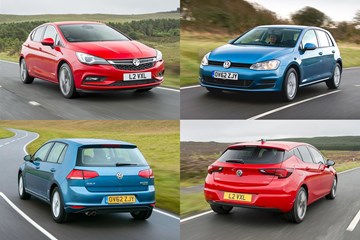 Twin test: Vauxhall Astra vs VW GolfThe mid-size hatchback has always been an incredibly competitive corner of the market and no wonder. It’s the most common dilemma, what car should a mid-size family with a medium...
Twin test: Vauxhall Astra vs VW GolfThe mid-size hatchback has always been an incredibly competitive corner of the market and no wonder. It’s the most common dilemma, what car should a mid-size family with a medium... -
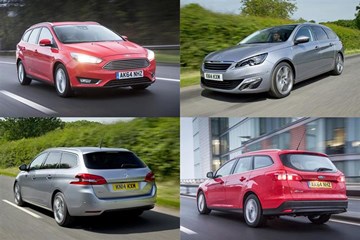 Twin test: low-cost estatesCarrying around lots of people and their luggage around used to mean buying a large estate with a thirsty engine. They were useful, but also incredibly expensive to run....
Twin test: low-cost estatesCarrying around lots of people and their luggage around used to mean buying a large estate with a thirsty engine. They were useful, but also incredibly expensive to run.... -
Most popular articles
-
 Hybrid vs electric vs petrol vs diesel: which is best for you?Your method of propulsion is among the most important decisions to make when choosing your next car. Low emission zones, the 2030 petrol and diesel ban and of course, the...
Hybrid vs electric vs petrol vs diesel: which is best for you?Your method of propulsion is among the most important decisions to make when choosing your next car. Low emission zones, the 2030 petrol and diesel ban and of course, the... -
 Importing a Japanese car to the UK: costs, process & key tipsLooking to import a car from Japan? Sometimes, the UK market simply doesn’t offer the specific model or spec you’re after. Whether it’s a high-performance JDM model, the best sports...
Importing a Japanese car to the UK: costs, process & key tipsLooking to import a car from Japan? Sometimes, the UK market simply doesn’t offer the specific model or spec you’re after. Whether it’s a high-performance JDM model, the best sports... -
-
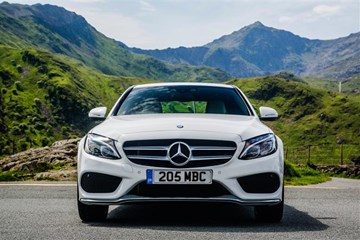 Mercedes-Benz C-Class – which version is best for you?When people say Mercedes-Benz C-Class, thoughts usually go straight to the saloon. No surprises there – it’s the biggest seller after all. However, many might not know that you can buy...
Mercedes-Benz C-Class – which version is best for you?When people say Mercedes-Benz C-Class, thoughts usually go straight to the saloon. No surprises there – it’s the biggest seller after all. However, many might not know that you can buy... -
 Diesel v hybrid: Which is best for me?The technology used in hybrid cars has been around since 2000 in the UK, however you wouldn’t be alone if you’d never driven one. Although small sale volumes initially caused...
Diesel v hybrid: Which is best for me?The technology used in hybrid cars has been around since 2000 in the UK, however you wouldn’t be alone if you’d never driven one. Although small sale volumes initially caused... -
 Selling a car on eBayeBay has one of the largest audiences on the web, making it one of the best places to market your used car for sale. It’s also a user-friendly...
Selling a car on eBayeBay has one of the largest audiences on the web, making it one of the best places to market your used car for sale. It’s also a user-friendly... -
-
 14 great cars for transporting twins and a toddlerBuying a new car is often top of the list of things to do before a new baby arrives. If you already have a toddler and you’re expecting twins, the subject...
14 great cars for transporting twins and a toddlerBuying a new car is often top of the list of things to do before a new baby arrives. If you already have a toddler and you’re expecting twins, the subject... -
 How to get the best price when buying a used car: tips that could save you thousandsIn the market to buy a used car? There are a few things you can do to ensure you’re getting the best price on your next purchase, regardless of where...
How to get the best price when buying a used car: tips that could save you thousandsIn the market to buy a used car? There are a few things you can do to ensure you’re getting the best price on your next purchase, regardless of where... -
-
 How to reduce your road taxAt a time when car running costs seem to be escalating ever higher, you may be looking around for ways of cutting down your outgoings. One way of doing that...
How to reduce your road taxAt a time when car running costs seem to be escalating ever higher, you may be looking around for ways of cutting down your outgoings. One way of doing that... -
 Which Audi A3 should you buy?The Audi A3 is a desirable alternative to the BMW 1 Series, Mercedes-Benz A-Class and Volvo V40. It’s got a great image and an even better interior to woo buyers...
Which Audi A3 should you buy?The Audi A3 is a desirable alternative to the BMW 1 Series, Mercedes-Benz A-Class and Volvo V40. It’s got a great image and an even better interior to woo buyers... -
.jpg) Road Test: Audi A3 Sportback 1.4 TFSI e-tron S-tronicOn paper, Audi’s A3 Sportback e-tron has it all: badge appeal, premium build quality, a spacious five-door hatchback body and an attention-grabbing fuel consumption claim of 176.6mpg, courtesy of its...
Road Test: Audi A3 Sportback 1.4 TFSI e-tron S-tronicOn paper, Audi’s A3 Sportback e-tron has it all: badge appeal, premium build quality, a spacious five-door hatchback body and an attention-grabbing fuel consumption claim of 176.6mpg, courtesy of its... -
-
 What is car depreciation and how to avoid itIt’s a fact of buying a new car that it loses value over time – a process known as depreciation. You lose 20% of its list price in VAT alone...
What is car depreciation and how to avoid itIt’s a fact of buying a new car that it loses value over time – a process known as depreciation. You lose 20% of its list price in VAT alone... -
 When’s the best time to buy a car?No matter the size, model or price, buying a new car takes some significant decision making. To ensure you come away with the best deal on the car you want,...
When’s the best time to buy a car?No matter the size, model or price, buying a new car takes some significant decision making. To ensure you come away with the best deal on the car you want,... -
-
 6 things that can void your car warrantyBuying a new car is exciting and knowing that it’s covered by a manufacturer warranty if something should go wrong offers great peace of mind. But there are exclusions and...
6 things that can void your car warrantyBuying a new car is exciting and knowing that it’s covered by a manufacturer warranty if something should go wrong offers great peace of mind. But there are exclusions and... -
 Twin test: used compact SUVsOne of the key battlegrounds for car manufacturers in recent years is the SUV market sector, with demand affordable compact crossovers leading the charge. We’ve pitted two of the nation’s biggest...
Twin test: used compact SUVsOne of the key battlegrounds for car manufacturers in recent years is the SUV market sector, with demand affordable compact crossovers leading the charge. We’ve pitted two of the nation’s biggest... -
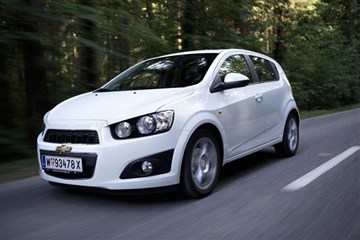 Chevrolet Aveo - what's the best spec?The Chevrolet Aveo could well be a smart choice if you are looking for something that’s affordable, cheap to run, eco-friendly and stylish. The facts speak for themselves: if you opt...
Chevrolet Aveo - what's the best spec?The Chevrolet Aveo could well be a smart choice if you are looking for something that’s affordable, cheap to run, eco-friendly and stylish. The facts speak for themselves: if you opt... -
-
 Twin test: Ford Fiesta ST200 vs Ford Focus STFor those wanting a sporting supermini, the Ford Fiesta ST has been a popular choice since it was launched in 2013. With a more entertaining drive and a lower list...
Twin test: Ford Fiesta ST200 vs Ford Focus STFor those wanting a sporting supermini, the Ford Fiesta ST has been a popular choice since it was launched in 2013. With a more entertaining drive and a lower list... -
 Driver's choice: Mercedes-Benz E350 Blue TEC road testIf you’re looking for an E-Class which is excellent to drive yet won’t spell financial ruin, your best bet is the E350 Blue TEC. Using a 3.0-litre diesel engine with 250bhp...
Driver's choice: Mercedes-Benz E350 Blue TEC road testIf you’re looking for an E-Class which is excellent to drive yet won’t spell financial ruin, your best bet is the E350 Blue TEC. Using a 3.0-litre diesel engine with 250bhp... -
-
 Driver's choice: Ford Kuga 2.0 TDCi AWD Titanium road testThe Ford Kuga may not be top of your list if you are considering an off-road vehicle but, make no mistake, the all-wheel-drive version is no slouch on the rough...
Driver's choice: Ford Kuga 2.0 TDCi AWD Titanium road testThe Ford Kuga may not be top of your list if you are considering an off-road vehicle but, make no mistake, the all-wheel-drive version is no slouch on the rough... -
 Twin test: Vauxhall Astra vs VW GolfThe mid-size hatchback has always been an incredibly competitive corner of the market and no wonder. It’s the most common dilemma, what car should a mid-size family with a medium...
Twin test: Vauxhall Astra vs VW GolfThe mid-size hatchback has always been an incredibly competitive corner of the market and no wonder. It’s the most common dilemma, what car should a mid-size family with a medium... -
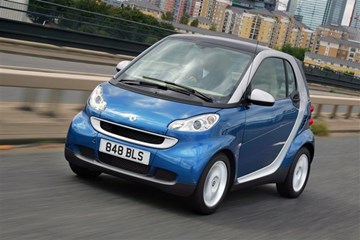 Twin Test: Ultra-compact city carsIt’s the battle of the ultra-compact city cars with the Smart ForTwo taking on Toyota’s IQ. Which is best for zipping through grid-locked streets, can park in the smallest of...
Twin Test: Ultra-compact city carsIt’s the battle of the ultra-compact city cars with the Smart ForTwo taking on Toyota’s IQ. Which is best for zipping through grid-locked streets, can park in the smallest of... -
Buying a new car? Need more help?
Buying a car is one of the most complex purchases most people do. After buying a house, it's likely the second biggest expense. It's no wonder people feel worried.
That's where Parkers comes in. We're here to provide impartial, expert new car buying help - with everything from explainers to advice articles and videos, all written in plain, jargon-free English.
Showroom advice: how to buy a new car safely
If you're looking for the best way to buy a car, remember to check out these sections if you need more help:
- Car finance help
- Parkers Picks: the best cars on sale today
- Browse cars for sale
- How much is my car worth?
Looking for the best car deals? Whether you want to browse our lists of the best cars on sale today, or have a look at our used cars for sale section, we have loads of advice and pointers on new car buying.
The best way to finance a car
If you're thinking about buying a new car on finance, before you head to the dealership read through our finance advice and watch our finance videos. We can help you understand the difference between PCP, HP, and PCH.

